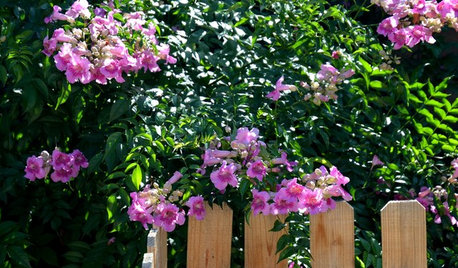Will roses propagate via root runners
vpost02176
18 years ago
Related Stories

PRODUCT PICKSGuest Picks: Leopard Prints to Pounce On
Seeing spots is a good thing when they give furniture, rugs, bedding and accessories such wildly beautiful style
Full Story
GARDENING GUIDES10 Top Native Plants for the U.S. Southeast
For a low-maintenance and wildlife-friendly landscape, use Southern natives that withstand heat and humidity
Full Story
HOUSEPLANTS8 Essentials for Healthy Indoor Plants
Houseplants add so much to our homes — and can thrive when grown in the right conditions. Keep these tips in mind
Full Story
DECORATING GUIDESSay 'I Do' to Beautiful Wedding Memory Displays
You'll love and cherish these creative vignettes, artwork and more that keep the happiness of your special day at hand
Full Story
SPRING GARDENINGTop 10 Scented Plants for Your Garden
A palette of perfumed plants can transform even the smallest of gardens into a sensory delight
Full Story
EDIBLE GARDENSNatural Ways to Get Rid of Weeds in Your Garden
Use these techniques to help prevent the spread of weeds and to learn about your soil
Full Story
GARDENING GUIDESWe Bust 4 More Native Plant Myths
Have you been taken in by these fallacies about gardening with native plants?
Full Story
GARDENING GUIDESGreat Garden Combo: 3 Wonderful Plants for a Deer-Resistant Screen
Protect your privacy and keep deer at bay with a planting trio that turns a problem garden area into a highlight
Full Story
PINK FLOWERSGreat Design Plant: Pink Trumpet Vine Heralds Vibrant Color
Announce your landscape beautification efforts with this flowering vine that perks up hot, dry gardens
Full Story
GRASSES10 Ways to Use Ornamental Grasses in the Landscape
These low-maintenance plants can add beauty, texture and privacy to any size garden
Full StoryMore Discussions






meldy_nva
rhizo_1 (North AL) zone 7
Related Professionals
Comstock Park Landscape Architects & Landscape Designers · Saint Matthews Landscape Architects & Landscape Designers · Maple Valley Landscape Contractors · Dunwoody Landscape Contractors · Kaneohe Landscape Contractors · Mission Landscape Contractors · New Cassel Landscape Contractors · Pleasant Prairie Landscape Contractors · Rancho Santa Margarita Landscape Contractors · Markham Landscape Contractors · Sun Valley Landscape Contractors · Arroyo Grande Window Contractors · Berkeley Window Contractors · Denver Window Contractors · Missouri City Window Contractorslindac
vpost02176Original Author
meldy_nva
Tiffany_Rose